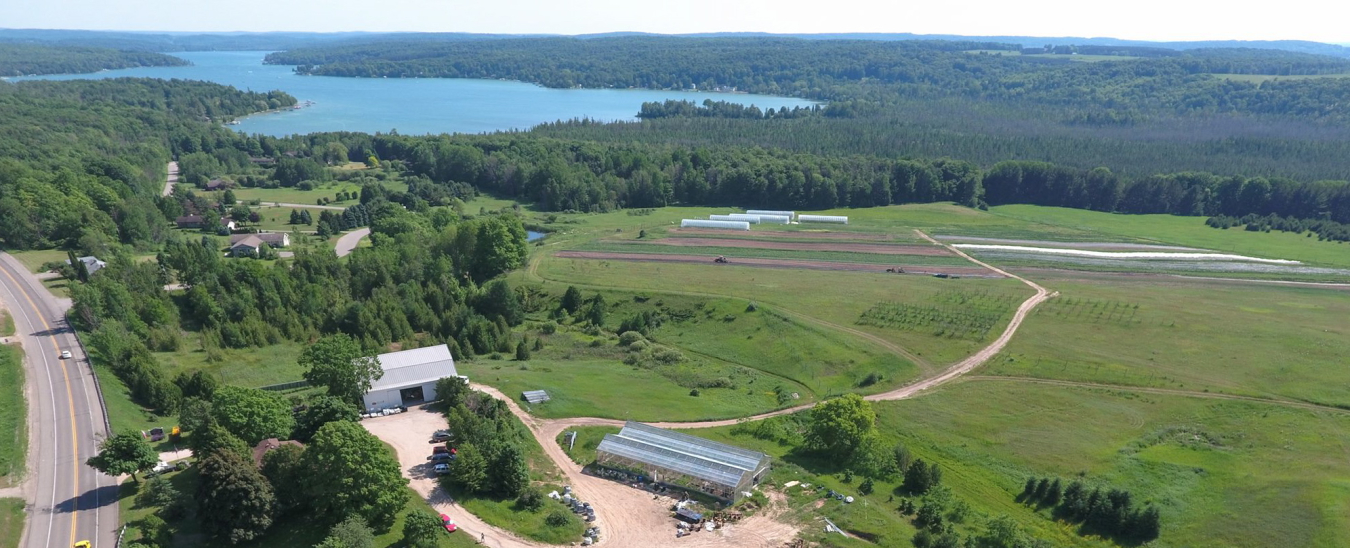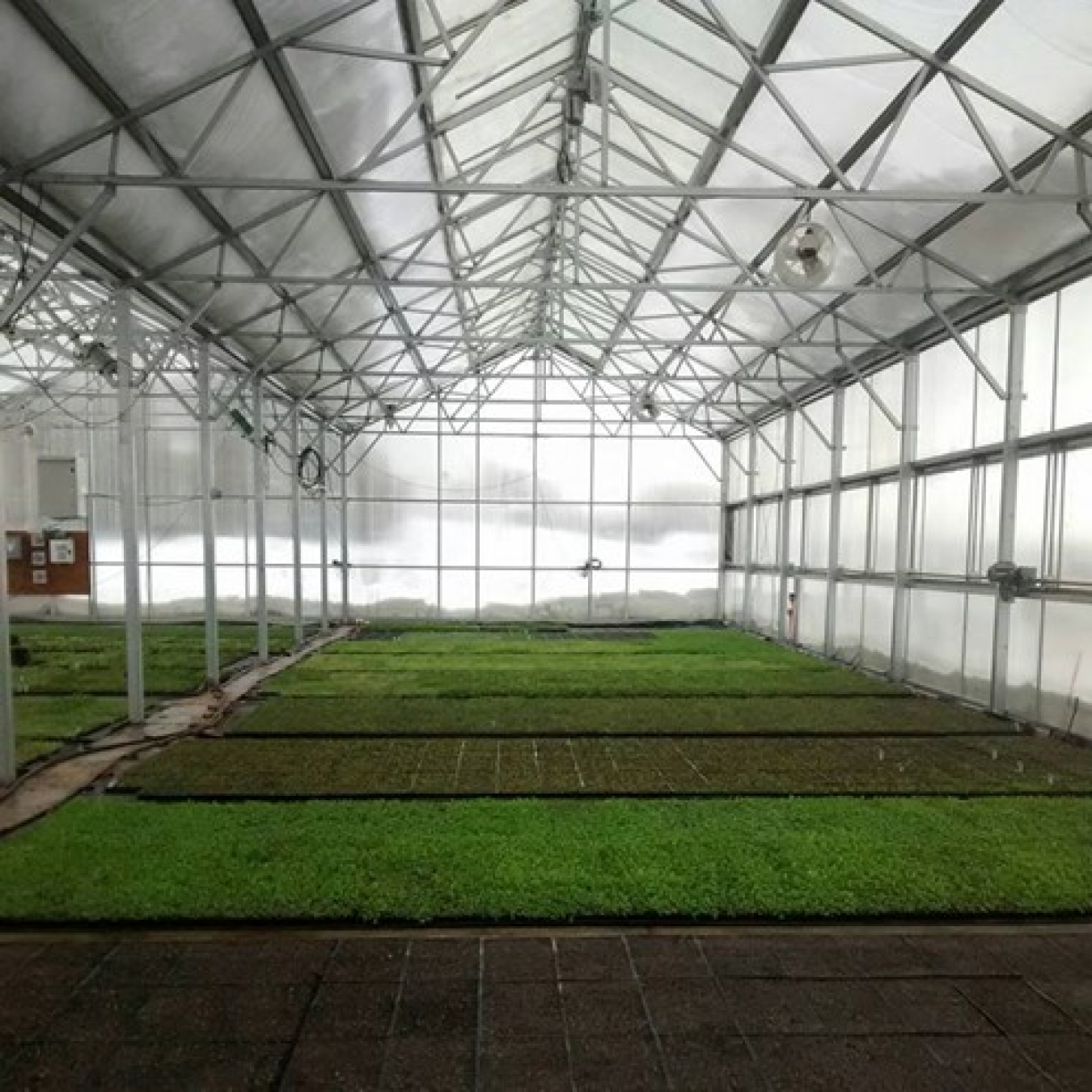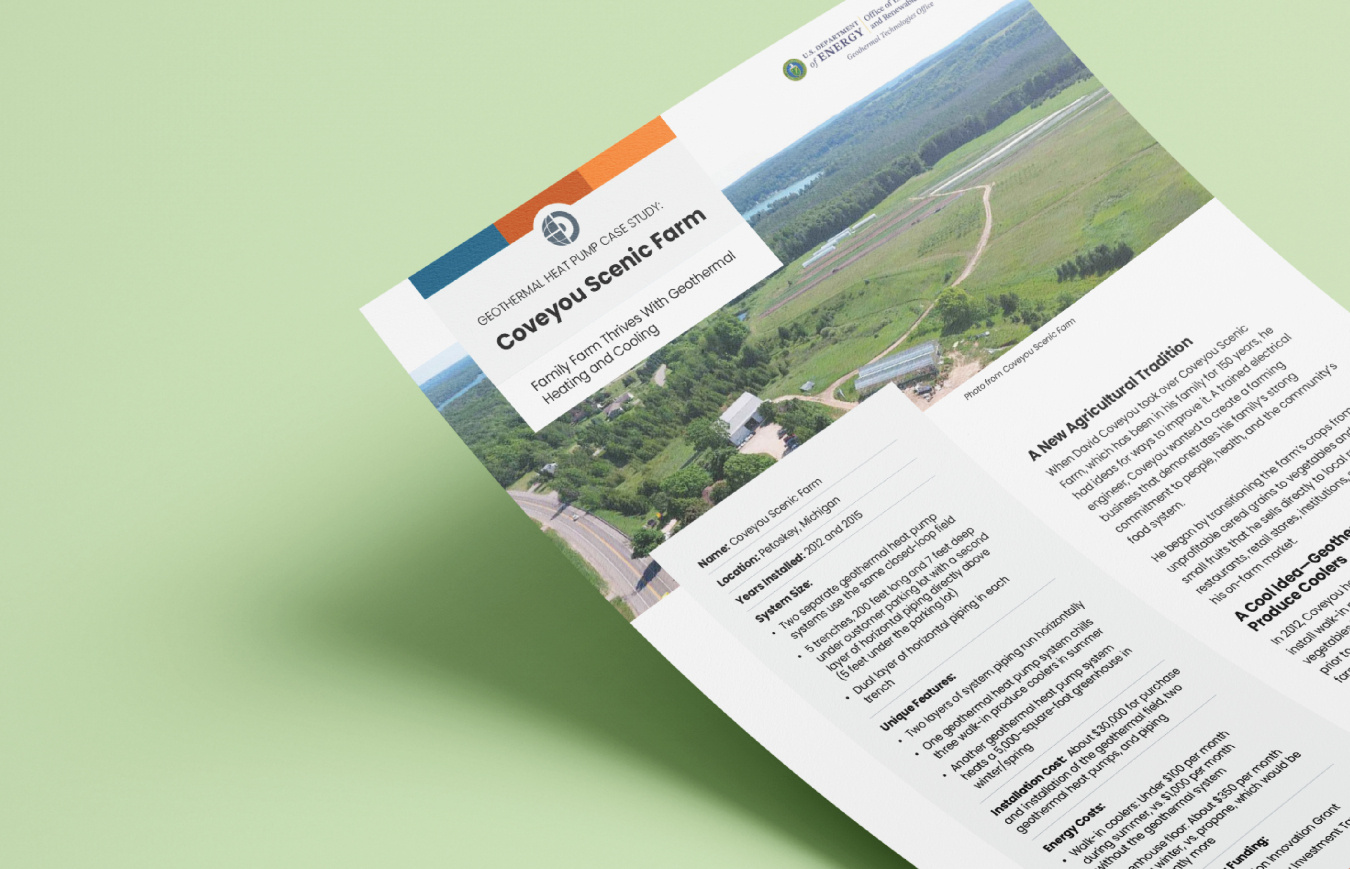
Photo from Coveyou Scenic Farm
Fast Facts
Location: Petoskey, Michigan
System Size:
- Two separate geothermal heat pump systems use the same closed-loop field
- 5 trenches, 200 feet long and 7 feet deep under customer parking lot with a second layer of horizontal piping directly above (5 feet under the parking lot)
- Dual layer of horizontal piping in each trench
Download the full case study for additional fast facts.
A New Agriculture Tradition
When David Coveyou took over Coveyou Scenic Farm, which has been in his family for 150 years, he had ideas for ways to improve it. A trained electrical engineer, Coveyou wanted to create a farming business that demonstrates his family’s strong commitment to people, health, and the community’s food system.
He began by transitioning the farm’s crops from unprofitable cereal grains to vegetables and small fruits that he sells directly to local residents, restaurants, retail stores, institutions, schools, and at his on-farm market.
A Cool Idea—Geothermally Chilled Produce Coolers
In 2012, Coveyou had another idea. He wanted to install walk-in produce coolers to keep fruits and vegetables from his fields fresh in summer months prior to sale. When he shared his idea with other farmers, however, they warned Coveyou that running the coolers could cost as much as $1,000 a month.
As an alternative, Coveyou decided to install a geothermal heat pump (GHP) system to chill three walk-in coolers that store produce. The system works by transferring heat out of the coolers all summer and storing the heat in the soil under Coveyou’s parking lot. This chills his coolers down to 35°F very cost-effectively. In the winter, the system switches to a low-level heating mode to keep the produce stored inside the coolers from freezing.

Even during cold Michigan winters, tender salad greens thrive on the geothermally heated concrete floor of Coveyou Scenic Farm’s seed propagation greenhouse. Photo from Coveyou Scenic Farm
Installation Cost: About $30,000 for purchase and installation of the geothermal field, two geothermal heat pumps, and piping
Energy Costs:
- Walk-in coolers: Under $100 per month during summer, vs. $1,000 per month without the geothermal system
- Greenhouse floor: About $350 per month during winter, vs. propane, which would be significantly more
Supplementary Funding:
- USDA Conservation Innovation Grant
- 30% Business Energy Investment Tax Credit
Coveyou found it would be less expensive to configure the geothermal pipes horizontally, rather than boring through the ground vertically. His installer dug five 200-foot-long trenches seven feet beneath Coveyou’s customer parking lot and laid two lines of horizontal piping four feet apart. To maximize heat transfer, he then covered this system with two feet of dirt and laid a second set of horizontal piping five feet below the surface. He connected both sets of piping to create a single closed-loop system.
Works Great, Saves Energy
Since it was installed, the heat pump system has worked well and costs around $100 per month during even the hottest summer periods.
According to Coveyou, “The magic sauce of the energy savings is that the geothermal heat pump transfers four to five times the thermal energy compared to what it uses in electricity to run.” This means that the cost of operating the farm’s produce cooling system is a fraction of what a conventional system would cost to operate.
Heated Greenhouse Floor Nurtures Seedlings
During the late winter, Coveyou Scenic Farm uses a greenhouse to grow plants, which are then transplanted to the fields in the spring.
After seeing how well the geothermal heat pump system worked to chill the farm’s coolers, Coveyou in 2015 installed another geothermal heat pump to heat the 5,000-square-foot propagation greenhouse concrete floor. This system has four in-floor heat zones that contain a series of plastic tubes through which heated fluid circulates to keep the floor at the desired temperature.
Heat removed from the walk-in coolers in summer is stored in the ground below the parking lot for use when the propagation greenhouse needs extra heat in the winter and spring.
Despite being made of glass and having no insulation, the greenhouse is warm enough for plants to flourish during cold Michigan winters.
“I’m a big fan of geothermal. We use geothermal heat pumps not only because they draw from an abundant renewable energy source, but because geothermal is a smart business decision: It significantly lowers our energy costs! For small farms like ours, geothermal goes a long way toward keeping our budget in the black.”
David Coveyou, Owner, Coveyou Scenic Farm
Contacts:
For questions about this case study, contact David Coveyou, market@coveyouscenicfarm.com.
For any website technical issues or general questions about geothermal heat pumps, contact DOE.Geothermal@ee.doe.gov.
Printable Version
Download the printable Coveyou Scenic Farm case study or visit the Geothermal Heat Pump Case Studies page to see more examples of geothermal heat pumps in action.


